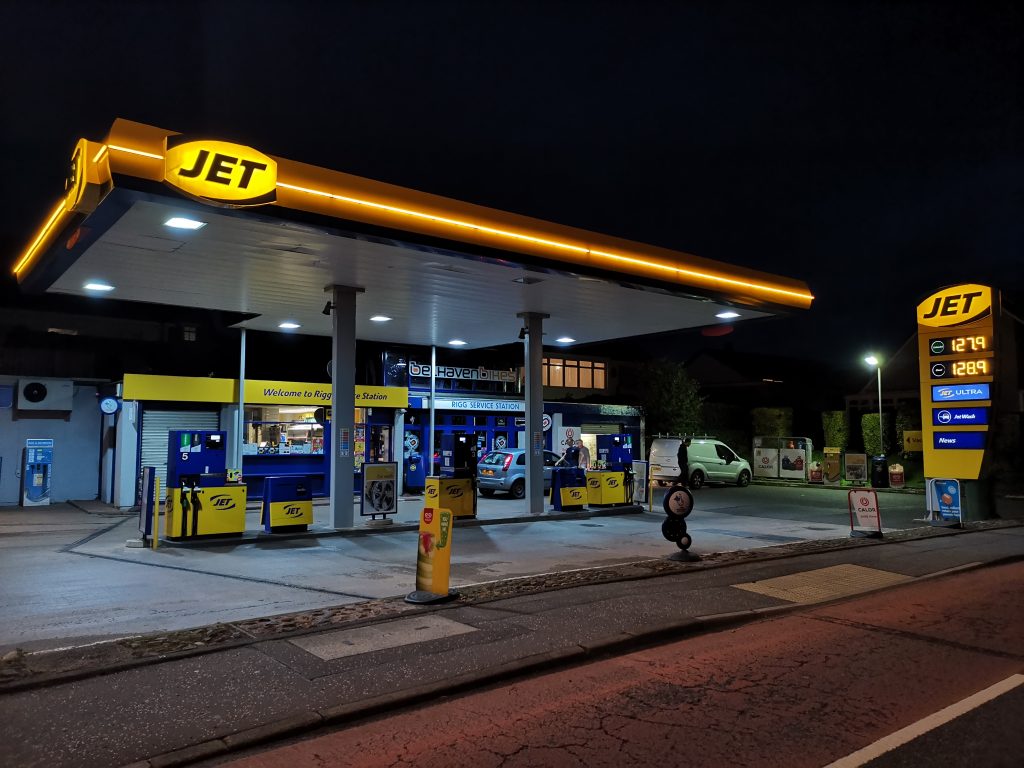Fast forward to now, and customers expect forecourts to fulfil their role as service stations – with the emphasis being on ‘service’ – a place where they can accomplish multiple purposes in a single trip.
There are more food and beverage offerings than ever before – such as Subway and Costa Coffee offering fresh refreshments, or co-locator supermarket alliances such as Shell / Waitrose and BP / Marks & Spencer to fulfil our grocery needs.
Customers want to make efficient use of their time – gone are the days of the traditional ‘fuel and go’.
The next 10 years will see the forecourt evolving further still, with the phasing out of petrol and diesel vehicles and the rise of new fuel alternatives.
This year is set to see the opening of the UK’s first electric-only forecourt as part of a £1bn development programme. These new ‘retail hubs’ are designed to offer “a fully loaded customer experience”, according to Toddington Harper, founder and chief executive of Gridserve, one of two eco-businesses behind this new venture.
With shops, cafés, business facilities, social hubs and more, forecourts will turn into destinations points where people will go to spend time rather than simply offering fuel and convenience.
The rise of convenience
Convenience retail in general is expanding year on year, fuelled by changing consumer spending patterns.
A recently published market report by Mintel on UK convenience stores and the impact of Covid-19 forecasts an almost 8% growth in 2020, taking the market to £47.5bn.
It’s clear the Covid-19 pandemic deterred consumers from visiting the big supermarket chains, leading to an increase in customers purchasing from smaller local shops – and allowing forecourt stores to act as places of convenience too.
According to data from Suresite, at the height of the pandemic spend was unsurprisingly down, but in recent months forecourts have seen an increased number of transactions – higher than pre-Covid levels.
Coupled with a lower basket spend, this data suggests purchases were less motivated by fuel, with national and regional lockdowns restricting travel, and more about convenience.
The growth in non-fuel retail (NFR) is a trend that is set to stay, with fuel giant Shell setting themselves an ambitious target of reaching 50% NFR profit by 2025.
Across the board, forecourt operators are investing heavily in NFR and making network trade-offs to facilitate a broader offering to attract a wider set of customers.
Price and location are traditionally the primary drivers for customer selection of a fuel station – with customers simply looking for the cheapest and most convenient offering.
Now, customer experience, loyalty programmes and the quality of NFR on offer are additional key drivers.
With consumer expectations higher than ever before, forecourt operators need to recognise that customers will be prepared to travel a bit further or pay a bit more to fulfil their needs.
While forecourt retail is evolving, it’s clear there is still a divide. Larger merchants and grocers are better equipped to meet customers’ needs when it comes to product ranges and incentives such as special offers and discounts.
Smaller retailers, on the other hand, are often dependent on suppliers with vested interests to advise what products to stock and where. ‘Headroom analysis’ allows a greater understanding of customer spending behaviour – knowing not only what customers spend with you but also what they spend elsewhere too.
This facilitates informed decisions about product ranges and offers to be based on what you know, not what you think will be most effective.
Digital payment transformation
The Covid-19 pandemic has fuelled the growth of a cashless society. But this has brought new challenges for independent retail. The merchant service fees for small retailers can be greater than the cost of handling cash.
This year has also accelerated the use of customer trends – think Apple Pay, cryptocurrencies and alternative payment devices. Customers want to be able to pay any time, on any device, by any currency.
But with every new payment method arises a new payment challenge and solution which every retailer needs to understand.
Therefore, smaller retailers, especially forecourt operators, where fuel margins are notoriously low, need to have a good understanding of different payment system solutions and associated service fees.
Negotiating merchant fees for the most common payment methods and choosing the right payment provider can make a significant impact on profits of independent retailers.
While the payment transformation has brought some challenges, it also offers a new source of data power.
The value of payment data insight for independent retailers through analysis of customer behaviour allows them to tailor their products and services to maximise sales and ensure their business thrives.
Therefore, it is important for independent retailers to choose payment partners who share payment data in an easily digestible format.
In the future, technology or partners that can provide SKU-level data – which allows the breakdown of a customer’s shopping basket item by item as well as insight into the customer themselves – will allow retailers to identify patterns in shopping behaviour and create more targeted offers.
Looking to the future
The landscape of the forecourt is changing. Gone are the days of a quick pit-stop and go, instead replaced with a more sophisticated blend of retail convenience.
Forecourt operators need to recognise the power of creating an unrivalled customer experience – whether that be through first-class customer service, a wider fuelling selection, new innovative services or a better choice of quality food and beverage offerings.
With a new breed of electric-only forecourts in our midst, traditional forecourts need to work with customer insight data to offer a tailored customer service experience to ensure they remain competitive and encourage repeat custom and loyalty.
Digital adoption is also key for forecourt retailers wishing to future-proof their business.
By improving the customer journey through greater efficiencies and a better understanding of customer behaviours, the whole experience can be tailored to suit consumer needs from products stocked through to payment options.
While this can seem very daunting, the benefits are vast for fuel retailers looking to ensure longevity and growth.
 Talking Retail Grocery and product news for independent retailers
Talking Retail Grocery and product news for independent retailers






